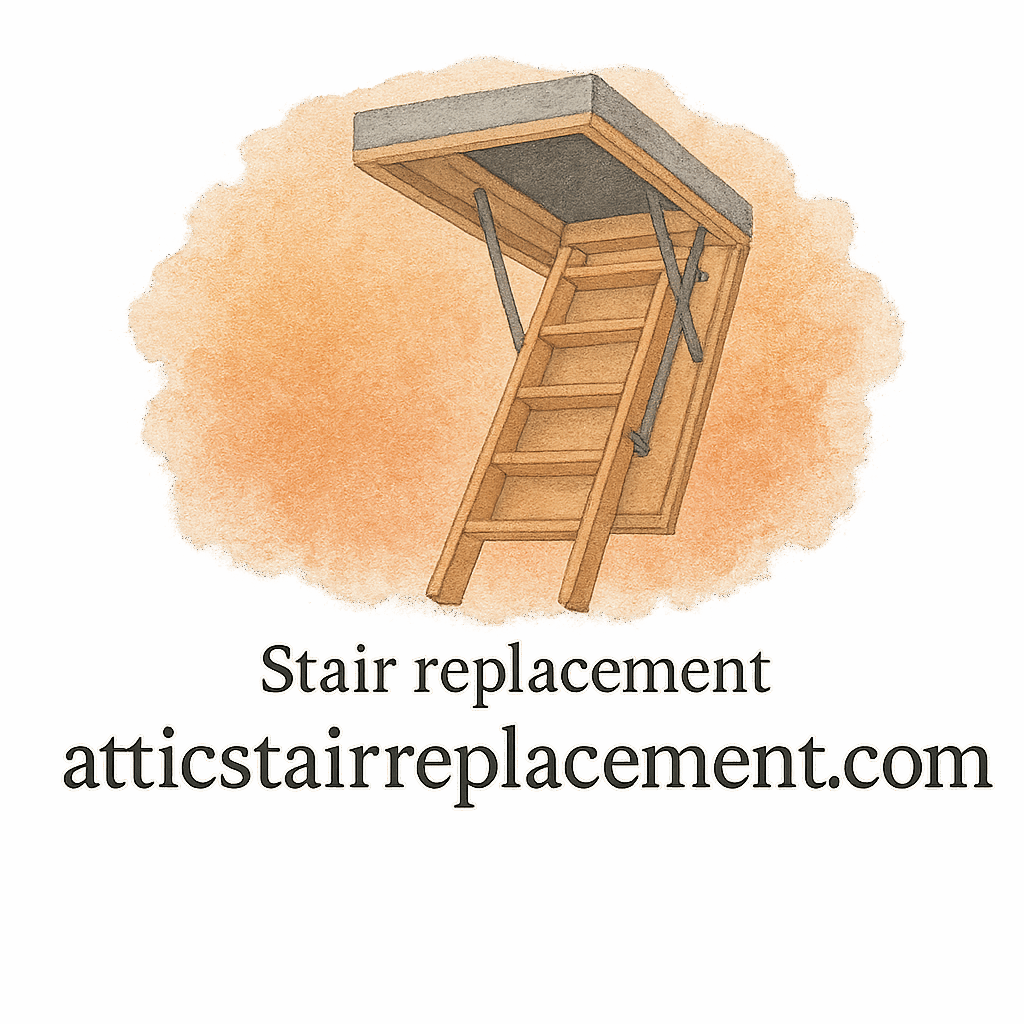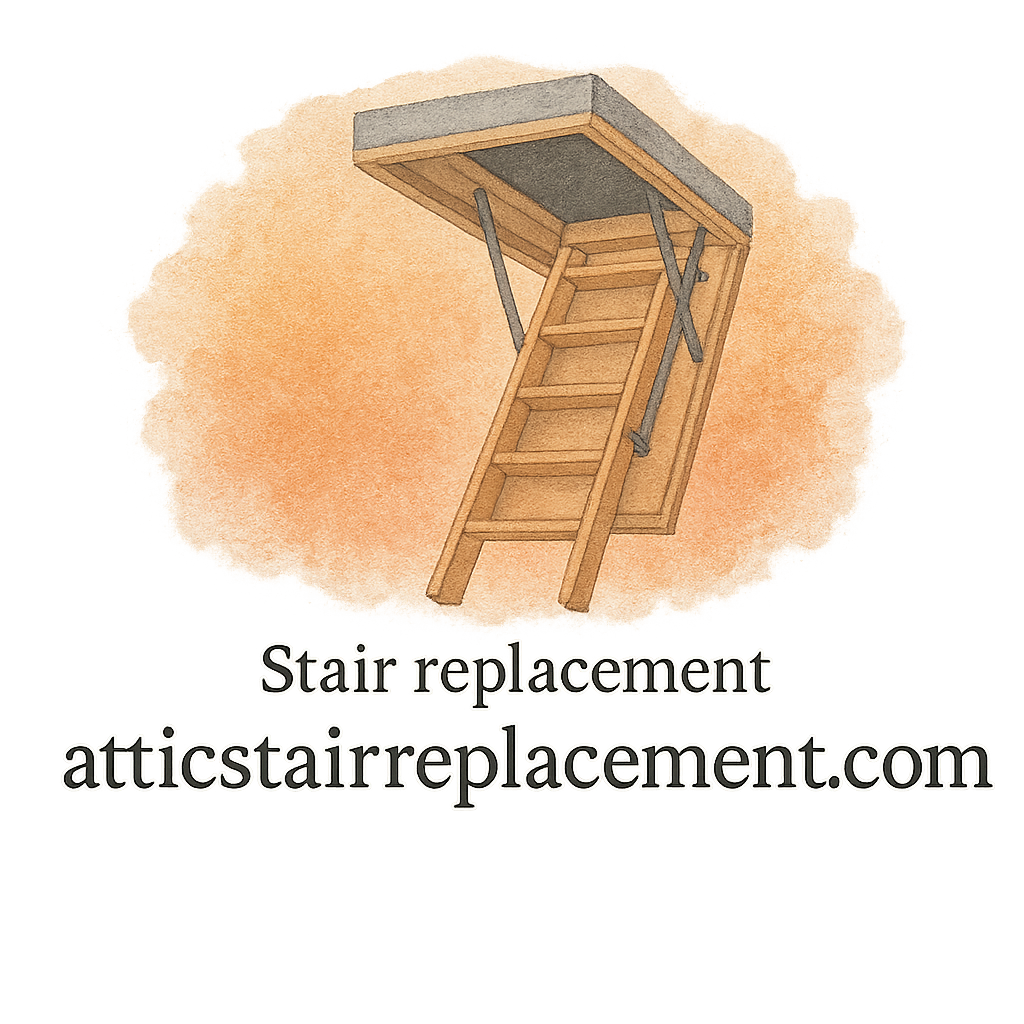Introduction: Why Tools Matter in Attic Stair Replacement
Replacing attic stairs sounds straightforward, right? You just pull the old one out and pop in the new one. But here’s the catch—without the right tools, your “simple” home project can turn into a frustrating, time-consuming mess. Attic stair replacement requires accuracy, stability, and safety. Having the proper tools ensures your project goes smoothly, your stairs last longer, and you don’t end up with unexpected problems down the road.
In this guide, we’ll cover the 7 must-have tools for attic stair replacement projects, along with bonus tools, safety tips, and common mistakes to avoid. Whether you’re a seasoned DIYer or considering hiring a contractor, you’ll walk away confident about what’s needed for a successful upgrade.
Understanding the Importance of Proper Tools
Think of attic stair replacement like cooking a recipe. Even if you have the right ingredients (the new stair kit), you can’t get the best results without the right utensils. In home improvement, tools are your utensils. Using the wrong ones leads to poor quality, hidden costs, and possible damage to your home.
Before we dive into the tools, let’s start with the most important step—safety.
Safety First: Preparing Your Workspace
Attic stairs aren’t installed at ground level—they’re overhead. That means extra safety precautions are non-negotiable. Clear the area of clutter, set up proper lighting, and always have a sturdy ladder or scaffolding to work on. Don’t forget your safety gear: goggles, gloves, and a hard hat. Safety gear may not be glamorous, but it prevents injuries that could cost far more than the tools themselves.
Tool #1: Measuring Tape – Accuracy Is Everything
When it comes to attic stair replacement, accuracy isn’t optional—it’s essential. A measuring tape is the foundation of your project. You’ll need it to measure the rough opening in your ceiling, check ceiling height, and ensure your new stairs fit perfectly.
Why Measurements Can Make or Break Your Project
Ever heard the phrase, “Measure twice, cut once”? That’s your mantra here. A mistake of even half an inch could mean your stairs don’t fit, leaving you stuck between a rock and a remodel. Before making any cuts or purchases, triple-check your measurements.
Pro tip: Always write down your numbers and label them clearly—confusing length with width is one of the most common mistakes DIYers make.
Tool #2: Power Drill – Your Best Friend for Fast Installation
No attic stair replacement project is complete without a power drill. This tool saves time, strengthens your installation, and reduces the risk of injury compared to manual tools.
Drill Bits and Attachments You’ll Need
You’ll need a set of drill bits for wood and metal, along with a screwdriver bit set. Some stair kits come with dozens of screws, and driving them in by hand is not only exhausting but also less secure. A drill ensures everything is tightened firmly and efficiently.
Tool #3: Circular Saw – Cutting with Precision
Sometimes, your ceiling opening won’t perfectly match the new stair frame. That’s where a circular saw comes in. You’ll use it to trim the opening or cut boards for reinforcement.
Safety Tips for Using a Saw in Small Spaces
Working overhead with a saw can be dangerous. Always stabilize your material, use proper lighting, and wear safety goggles. If the idea of wielding a saw above your head makes you nervous, consider calling in a professional.
Tool #4: Adjustable Wrench – Tightening the Right Way
An adjustable wrench is crucial for tightening bolts and securing the stair frame. It gives you leverage and ensures that your stairs won’t loosen over time.
Why a Wrench Ensures Stair Stability
Loose bolts can lead to creaks, wobbles, or worse—a structural failure. A wrench makes sure everything stays snug and secure, protecting both your investment and your safety.

Tool #5: Level – Keeping Everything Straight and Secure
Installing attic stairs isn’t just about making them fit—it’s about making them straight. A level helps you confirm that the frame is properly aligned with your ceiling joists.
Avoiding Crooked Stairs with Simple Checks
Without a level, you risk having stairs that don’t fold correctly or put unnecessary stress on the frame. A quick check with a bubble level saves you from long-term headaches.
Tool #6: Hammer – A Timeless Essential
The hammer may be old-school, but it’s still essential. From removing old nails to securing trim pieces, a hammer is one tool you’ll use more than once.
When to Use a Hammer Over a Drill
Not every job needs a drill. Sometimes, a quick tap with a hammer is faster, simpler, and more effective. Think of it as the Swiss Army knife of your toolkit—basic, but always useful.
Tool #7: Ladder – The Unsung Hero of Attic Projects
Ironically, you need a ladder to install stairs. A sturdy, reliable ladder is your best friend during attic stair replacement.
Choosing the Right Ladder for Safety and Access
Pick a ladder tall enough to reach your workspace without forcing you to stretch dangerously. Fiberglass ladders are durable and safer than aluminum when working around electrical wiring.
Bonus Tools Worth Considering
Sometimes the basics aren’t enough. Here are a few extras that can make your project smoother:
Nail Gun
Faster than a hammer and great for reinforcement.
Safety Gear (Gloves, Goggles, Hard Hat)
Not optional. These protect you from splinters, dust, and falling debris.
DIY vs Hiring a Contractor: Which Path Is Best?
Should you tackle attic stair replacement yourself or hire a pro? It depends on your skills, tools, and confidence level.
Cost, Time, and Quality Considerations
DIY saves money but requires time and precision. Hiring a contractor ensures professional results but adds labor costs. If you’re unsure, check out expert advice on attic stair replacement.
Common Mistakes When Replacing Attic Stairs
Skipping Safety Gear
A single mistake can cause injury. Don’t skip this.
Rushing Measurements
Impatience leads to poor fit and wasted money.
Using the Wrong Tools
Improvising with the wrong tools may damage your stairs or your ceiling.
Maintenance After Installation
Regular Inspections and Tightening
Check bolts, screws, and hinges at least twice a year.
Cleaning and Lubrication Tips
Dust buildup can cause stiffness. A little lubricant on hinges goes a long way.
For more tips, visit the maintenance and repair section.
Final Thoughts
Replacing attic stairs isn’t rocket science, but it does require planning, precision, and the right set of tools. With these 7 essentials—plus a few bonus items—you’ll have everything you need for a safe, sturdy, and smooth attic stair replacement.
If you’re a DIY enthusiast, this project is a rewarding way to upgrade your home. If you’d rather leave it to the pros, you’ll at least know what tools they’re using and why. Either way, the right tools make all the difference between a job well done and a frustrating weekend project.
For more in-depth guides and resources, check out Attic Stair Replacement and related sections like DIY installation or home improvement.
FAQs
1. Can I replace attic stairs without power tools?
Technically yes, but it will take much longer and may compromise quality. Power tools ensure strength and precision.
2. How long does attic stair replacement usually take?
For experienced DIYers, about 4–6 hours. For beginners, a full weekend is realistic.
3. What’s the most important tool for attic stair replacement?
A measuring tape—because if your measurements are off, nothing else matters.
4. Can I reuse my old attic stair frame?
It’s possible, but not recommended. Old frames may be warped or weakened.
5. Do I need a permit to replace attic stairs?
In most cases, no. But check your local building codes to be sure.
6. How often should I maintain my attic stairs?
At least twice a year—tighten bolts, clean hinges, and check for wear.
7. Should I hire a contractor if I don’t have these tools?
Yes. Contractors bring both the tools and expertise. It may cost more, but it ensures a safe, durable installation.


